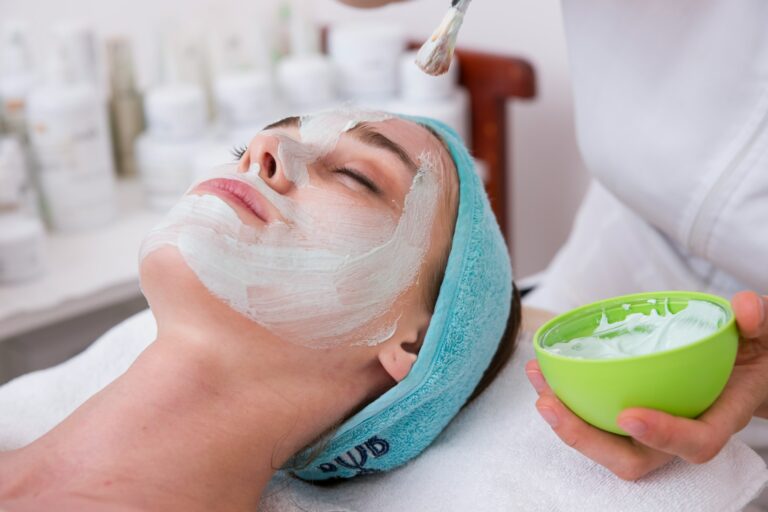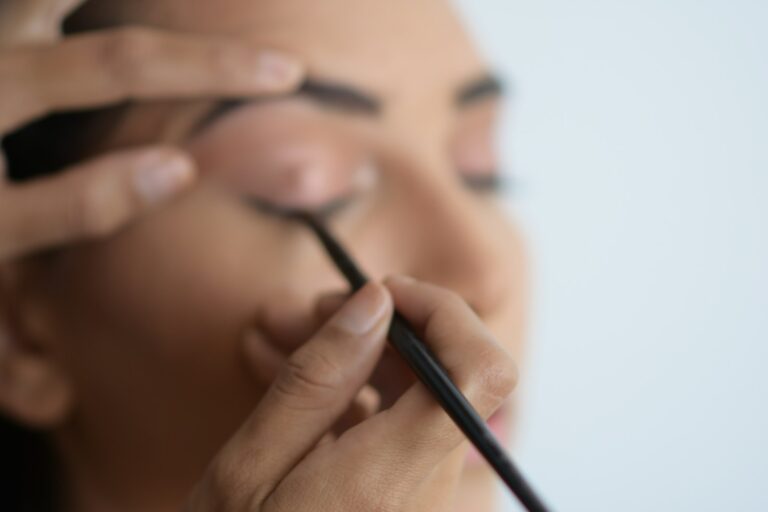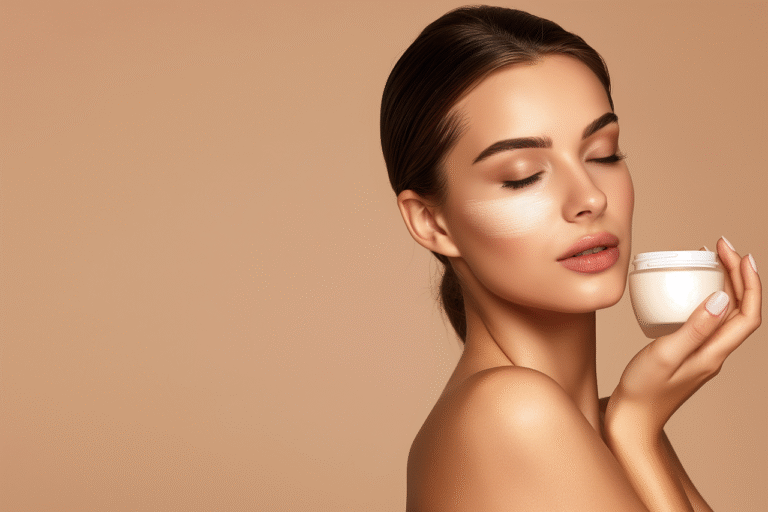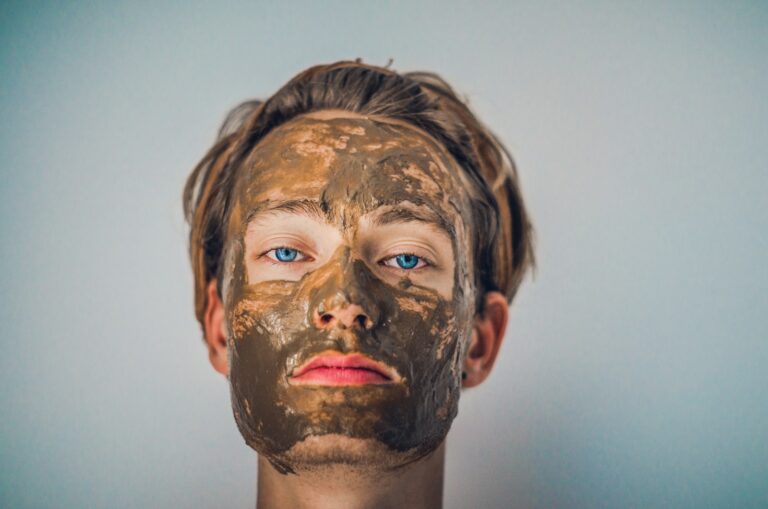Many people find themselves overwhelmed by the variety of skincare products available today, but mastering layering techniques can significantly enhance your routine. By understanding how to properly layer your products, you can effectively target specific skin concerns, achieve a healthy glow, and prevent potential irritation from improper combinations. This guide will walk you through the importants of layering, helping you optimize your skincare regimen for a balanced, thriving complexion. Whether you’re starting anew or refining your approach, this information is designed to empower your journey to healthy skin.
The Foundation of Effective Skincare: Ingredients Matter
The Role of Active Ingredients
Active ingredients serve as the powerhouses of your skincare routine, providing targeted benefits that can address various skin concerns. For example, retinol is known for its ability to reduce fine lines and improve skin texture, while vitamin C is celebrated for its brightening effects and ability to combat free radical damage. Understanding how these active ingredients function enables you to tailor your skincare regimen to suit your unique challenges, whether it’s acne, hyperpigmentation, or aging. Pairing active ingredients correctly can also enhance their efficacy; for instance, layering vitamin C with sunscreen can offer heightened protection against environmental stressors.
Your skin’s response to these actives often depends on their concentration and formulation. Some products might contain high concentrations that cause irritation, particularly for sensitive skin types. Therefore, introducing one active ingredient at a time can help you gauge your skin’s tolerance. Keep an eye on product formulations; ingredients like peptides can work synergistically with your chosen actives, delivering more substantial results when layered properly.
The Importance of Base Ingredients
Base ingredients play a significant role in your skincare products, acting as carriers for active ingredients while simultaneously delivering hydration and nourishment to your skin. Ingredients such as glycerin and hyaluronic acid are popular choices for their ability to draw moisture into the skin, providing a plump and supple appearance. These base components can also enhance the absorption of the actives, making your skincare routine not just about layering, but about layering effectively. The right base ingredients can mitigate potential irritation from stronger actives and create a balanced environment for your skin to thrive.
Incorporating quality base ingredients into your skincare routine can improve how your skin reacts to active ingredients. For example, using a niacinamide serum, which offers soothing properties, alongside a potent exfoliant can reduce the risk of irritation while maximizing the benefits of exfoliation. Your skin benefits not just from what you apply, but also from how those ingredients interact with each other. A thorough understanding of base ingredients ensures that you create a harmonious skincare routine, leading to healthier, more resilient skin.
Decoding the Skincare Product Order: What Goes First?
The Importance of Consistency
Your skin thrives on routine. By layering your skincare products in the right order consistently, you’re setting the stage for maximum absorption and effectiveness. For instance, applying your lighter serums before thicker creams ensures that potent ingredients penetrate deeper into your skin. A daily regimen, done morning and night, allows your skin to build a tolerance to active ingredients, while also benefiting from their cumulative effects. Within a few weeks, you may notice a visible difference in texture, brightness, and overall health.
Incorporating a consistent routine also aids in forming habits that are imperative for skincare success. Skipping a product here and there can lead to imbalances or missed benefits that your skin craves. Utilizing a well-structured application technique becomes second nature, and before you know it, your skin will reap the rewards of this dedicated approach. Think of it as a ritual that not only nurtures your skin but also allows for moments of self-care in your day-to-day life.
The Role of Texture and Thickness in Application
The texture of your skincare products plays a pivotal role in how well they mix and interact with each other. For optimal layering, begin with the lightest textures and move to the heaviest. For instance, you should first apply your water-based products, such as toners and essences, followed by oil-based serums and finally heavier creams or lotions. This order ensures that lighter products can penetrate effectively without being blocked by denser ingredients.
Considering the thickness of your products also aids in avoiding potential pilling on the skin. If you layer a thick cream over a lightweight serum that hasn’t fully absorbed, it could lead to annoying little balls of product on your face. To counter this, allowing each layer to absorb adequately before adding another can mitigate any such issues. Moreover, some products may interact negatively if applied improperly, leading to undesirable results. By honoring the hierarchy of textures, you empower your skin to better absorb and utilize each formulation.
When evaluating textures, keep in mind how your skin feels after application. Lighter formulations like gel or water-based serums often absorb quickly, giving a fresh feel. Thicker products, such as creams or oils, create a barrier that locks in moisture, making them perfect for nighttime use when your skin is in recovery mode. Understanding these differences will allow you to tailor your routine based on your skin’s specific needs, whether that’s hydration, protection, or repair.
Building Your Skincare Routine: Essential Product Categories
Cleansers: Starting with a Clean Slate
A solid skincare routine begins with effective cleansing. Cleansers are designed to remove impurities, excess oil, and makeup, ensuring that your skin is prepared for the following products. Look for a cleanser that suits your skin type, whether you have oily, dry, or combination skin. For instance, gentle foaming cleansers work well for oily skin, while creamy or oil-based cleansers are ideal for dry or sensitive skin. The goal is to eliminate the buildup from the day without stripping your skin of its natural moisture.
Double cleansing has become a popular practice, especially if you wear makeup or sunscreen on a daily basis. Start with an oil-based cleanser to dissolve makeup and pollutants, followed by a water-based cleanser to thoroughly clean any remaining residue. This two-step process can significantly improve the effectiveness of the products you apply afterward, allowing your skin to better absorb toners, serums, and moisturizers.
Toners: The Often-Overlooked Step
Toners bridge the gap between cleansing and the rest of your skincare routine by prepping your skin to absorb subsequent products more effectively. Often misunderstood, toners can offer various benefits depending on their active ingredients. For instance, hydrating toners with hyaluronic acid can restore moisture, while exfoliating toners containing ingredients like salicylic acid can help unclog pores and improve skin texture. Incorporating a toner can add that extra layer of care your skin needs after cleansing.
Applying toner is simple; just saturate a cotton pad with the product and swipe it across your face, or use your hands to pat the toner directly onto your skin. Look for alcohol-free options to avoid irritation, especially if you have sensitive skin. The right toner can significantly enhance your skincare routine by ensuring your skin is balanced and ready for the following steps.
Serums: Targeting Your Skin Concerns
Serums are concentrated formulations packed with active ingredients designed to address specific skin concerns. Whether you aim to target anti-aging, acne, brightening, or hydration, there’s likely a serum tailored for you. Common ingredients include Vitamin C for brightening, retinol for anti-aging, and niacinamide for balancing oil production. Given their lightweight consistency, serums can penetrate deeper into the skin, delivering effective results when applied after toning.
Consider layering multiple serums based on your skin’s needs—this approach is often referred to as “skin cocktailing.” Just be cautious not to combine ingredients that may cause irritation, such as retinol with Vitamin C, as they can be potent. Instead, use retinol in your evening routine and Vitamin C in your morning routine to maximize their benefits without overloading your skin.
Moisturizers: Hydration and Protection
Moisturizers are the cornerstone of any skincare regimen, providing hydration and enhancing your skin’s protective barrier. They help to lock in moisture and prevent transepidermal water loss, keeping your skin plump and healthy. Choose a formulation that aligns with your skin type; gel-based moisturizers are excellent for oily skin, while thicker creams are beneficial for dry or sensitive skin. Look for key ingredients like ceramides and glycerin that nourish and strengthen the skin.
Applying moisturizer after serums is a fundamental step in locking in all the treatment benefits you’ve provided. A good moisturizer not only hydrates but also works synergistically with other products to increase their efficacy. For daytime use, consider a moisturizer with added sun protection for a comprehensively protected complexion.
Sunscreen: Your Daily Shield Against Harm
No skincare routine is complete without sunscreen. Exposure to UV rays can lead to premature aging, hyperpigmentation, and an increased risk of skin cancer. Incorporating a broad-spectrum sunscreen with an SPF of at least 30 into your daily regimen is crucial, regardless of the weather or your planned outdoor activities. Even on cloudy days, up to 80% of UV rays can penetrate through, so consistent application is key to keeping your skin safe.
Choose a formulation that feels comfortable for you, as there are many options available, including gel-based, lotion, and mineral sunscreens. You can even find tinted sunscreens that can double as a light foundation. Daily application of sunscreen reduces the risk of skin damage and keeps your skin looking youthful and radiant over time.
Layering Like a Pro: Techniques for Maximum Absorption
Pat vs. Rub: The Best Application Methods
Applying products correctly can significantly impact their effectiveness. Patting instead of rubbing is often recommended for serums and essences. By gently tapping the product into your skin with your fingertips, you encourage deeper absorption without disrupting the skin barrier. This method minimizes the chances of leaving residues on the skin’s surface while stimulating circulation and enhancing the overall health of your skin. Products like hyaluronic acid serums, which benefit from being pressed into the skin, truly shine with this technique.
On the other hand, creams and heavier moisturizers may benefit from a gentle rubbing motion. Using your palms to evenly distribute these products ensures they form a protective layer over your skin while preventing any dry patches. A light, circular motion helps your skin to absorb fat-soluble ingredients effectively, maximizing their benefits for your complexion.
Timing is Everything: Wait Times Between Layers
Allowing adequate time between layers allows each product to penetrate effectively, preventing ingredients from overlapping and potentially diluting each other. A general rule of thumb is to wait about 30 seconds to a minute after applying each product. This wait time is especially beneficial after thinner, water-based products like toners and serums before moving on to thicker moisturizers or oils.
Some ingredients are more potent than others and can require additional time to settle. For example, products containing retinol or vitamin C often need a longer waiting period before sealing them with a moisturizer. Skincare experts recommend a gap of up to five minutes for these products to prevent any potential irritation and ensure your skin benefits fully from their active components.
It’s worth noting that waiting times can vary depending on your specific products and formulas used. Observing how your skin responds can guide you in establishing the ideal intervals. If you notice any slippage or a sticky residue, extending your wait time might just be the solution to achieving that perfect balance for flawless layering.
Navigating the World of Multi-Functional Products
Benefits of All-in-One Solutions
Multi-functional products can revolutionize your skincare routine by offering a blend of benefits that can simplify your regimen without sacrificing results. Imagine having a moisturizer that provides hydration, sun protection, and anti-aging benefits all in one tube. With products like BB creams or tinted moisturizers, you not only streamline your daily routine but can also save valuable time in the morning. A survey by Statista revealed that over 60% of consumers prefer products that eliminate the need for multiple steps, emphasizing the demand for efficiency in beauty routines.
These all-in-one solutions often combine powerful ingredients known for their effectiveness, such as hyaluronic acid for hydration, antioxidants like vitamin C for protection, and niacinamide for improving skin texture. Furthermore, by investing in fewer but higher-quality products, you can save money while ensuring you’re using formulations that maximize your skin’s potential, allowing for better results overall.
When Simplicity Beats Complexity
While multi-functional products have gained popularity, there are times when simpler is better. For example, if your skin is particularly sensitive or reactive, putting too many compounds on your skin might lead to irritation or breakouts. Single-use products that focus on one or two active ingredients can often be more effective in targeting specific issues, such as a targeted treatment for acne or a soothing serum for redness.
Additionally, when your skin is experiencing particular concerns like dryness or irritation, using fewer, more targeted products can provide immediate relief without overwhelming your skin. Each ingredient you add into your routine brings the potential for interaction with your skin and other products, which can complicate results. Sticking to a streamlined approach with specific, effective products can yield better clarity and focus on your skin’s needs during these times.
Finding the right balance between multi-functional products and streamlined simplicity is key to achieving optimal skincare outcomes. If you’re layering an extensive routine yet find your skin reacting poorly, scaling back to products with fewer, well-researched ingredients might be beneficial. Even a minimalist regimen can achieve remarkable results when focused on quality over quantity.
Common Pitfalls to Avoid When Layering Skincare
Overloading Your Skin: Signs to Watch
Layering too many products can overwhelm your skin, leading to issues like irritation, breakouts, or excessive dryness. If you’ve noticed your skin becoming reactive after starting a new regimen, observe how it responds. Signs of overloading often include redness, peeling, or the appearance of acne, even if you usually don’t experience those issues. When your skin feels tight, especially after applying your skincare, it’s an indication that you may need to simplify your routine.
In general, listen to your skin. If it’s constantly feeling greasy or looks overly shiny, you might be adding too many layers or products that are too rich for your skin type. A balance is crucial for achieving the desired glow without triggering adverse reactions, so when in doubt, strip it back to the importants.
Mixing Incompatible Ingredients: What Not to Combine
Certain ingredients simply do not play well together. For instance, combining AHAs (alpha hydroxy acids) and retinol can cause excessive exfoliation and irritation, leaving your skin red and sensitive. Similarly, mixing vitamin C with niacinamide can compromise their effectiveness. This is particularly relevant given that both ingredients work to enhance the skin but in ways that can counteract each other’s benefits if incorrectly layered.
Another problematic pair is benzoyl peroxide and retinols; both are potent skincare staples aimed at treating acne but can create an imbalance when layered. A smart approach is to use these ingredients at different points in your routine. For example, reserve retinol for nighttime and use benzoyl peroxide during the day for maximum efficacy without the risk of irritation.
Advancing Your Routine: Adaptation Based on Skin Type and Season
Customizing for Your Skin Type: Oily vs. Dry vs. Sensitive
Your skin type plays a significant role in determining which products will work best for you. For oily skin, lightweight, non-comedogenic formulas are ideal. Opt for gel-based moisturizers and serums containing salicylic acid or niacinamide, which help control shine and minimize the appearance of pores. Layering with a mattifying primer can also help create a smoother base before makeup application. Conversely, if you have dry skin, heavier, richer formulas containing hyaluronic acid, glycerin, or ceramides can lock in hydration. Incorporate face oils into your routine, as they can provide an extra layer of protection against moisture loss.
For sensitive skin, choosing products with minimal ingredients and avoiding fragrances is vital. Look for soothing agents like aloe vera, chamomile, or green tea extract that can calm irritation. Shield your skin with a barrier cream as your final layer, ensuring that harsh environmental factors don’t penetrate. Additionally, be mindful of how you layer your actives; introducing them gradually can prevent overwhelming your skin.
Seasonal Changes: Adjusting Your Products Throughout the Year
As the seasons shift, so should your skincare routine. In the winter, for example, lower humidity levels can exacerbate dryness, necessitating the use of richer oils and creams to combat moisture loss. You might also want to consider a thicker, occlusive moisturizer for the colder months, as this can help seal in hydration much more effectively. In contrast, summertime calls for lighter formulations to avoid a greasy feel during those warmer days; switch to gel moisturizers and frequent exfoliation to help maintain a fresh complexion.
The transition from winter to spring might encourage you to reevaluate your products as allergies arise. Formulations with antioxidants can be beneficial during this period, helping to protect your skin from environmental stressors. Similarly, around fall, consider incorporating products that prep your skin for the colder months ahead, such as ones that emphasize hydration and repair. By remaining adaptable in your routine, you can ensure your skin remains balanced and healthy throughout the year.
Expert Tips and Tricks for Skincare Layering Mastery
- Always apply products from lightest to heaviest. This allows the skin to absorb and benefit from each layer effectively.
- Wait a few minutes between layers to let each product fully absorb into your skin. This practice enhances the overall effectiveness of your routine.
- Incorporate a finishing product such as a moisturizer or oil to seal in all the goodness from your layered skincare routine.
- If you’re experimenting with new products, introduce them one at a time to avoid overwhelming your skin. Observe how your skin reacts before adjusting your routine.
- Choose products with complementary ingredients. For example, combining hyaluronic acid with vitamin C can enhance hydration while brightening your complexion.
Recommendations from Skincare Professionals
Consulting with dermatologists and estheticians can provide invaluable insights tailored to your specific needs. Many professionals suggest starting with a simple routine and gradually adding layers based on your skin’s response. A common recommendation is to maintain a balance by selecting products that cater to your skin’s needs without overwhelming it. For example, if your skin is dry, layering a hydrating serum with a rich cream will lock in moisture effectively.
It’s also wise to be mindful of ingredient compatibility. In the professional realm, mixing actives such as retinol and acids can lead to irritation. Instead, apply them at different times of the day or alternate them on different days. This approach allows you to harness their benefits without sacrificing skin health.
Real-Life Success Stories from Skincare Enthusiasts
Many skincare enthusiasts have transformed their skin through dedicated layering practices. For instance, one user reported that incorporating a niacinamide serum beneath their moisturizer not only minimized their pores but also reduced blemishes over time. Such stories underline how personalized routines can yield impressive results. Engaging with community discussions often reveals testimonials of individuals whose skin conditions, from acne to dryness, have improved significantly through layering.
Another remarkable narrative comes from a skincare blogger who documented her journey from severely dry skin to a radiant complexion. After implementing a systematic approach to layering—considering skin type and product compatibility—she achieved lasting hydration and a visible glow. Personal success stories like these often inspire others to venture into a more customized skincare journey, making layering a process of discovery rather than a chore.
After plunging into the real-life experiences of fellow enthusiasts and expert advice, you’re now equipped to layer your skincare routine effectively. Whether you’re aiming for hydration, anti-aging, or simply glowing skin, the right approach tailored to your unique needs will help you master the art of layering.
To wrap up
With these considerations in mind, you are now equipped with the vital knowledge to effectively layer your skincare products. Start by understanding your skin type and its specific needs to select the right products for your regimen. Follow the general guideline of applying from the lightest to heaviest texture, allowing each layer to absorb fully before adding the next. This method not only maximizes the benefits of the products but also enhances your skin’s overall texture and appearance.
As you experiment with your skincare routine, be patient and attentive to how your skin responds. Skin care is not a one-size-fits-all approach, so feel free to adjust your layering techniques and product combinations to discover what works best for you. By applying these principles, you are on your way to achieving a radiant complexion that reflects your dedicated skincare efforts.







